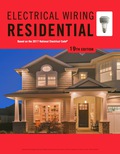Cubes 1 and 2 electrostatically attract each other, and Cubes 1 and 3 electrostatically repel each other. (Yes, Cubes 1, 2, and 3 are electrically charged.) Which of the following illustrates the correct electrostatic interaction between
Cubes 1 and 2 electrostatically attract each other, and Cubes 1 and 3 electrostatically repel each other. (Yes, Cubes 1, 2, and 3 are electrically charged.) Which of the following illustrates the correct electrostatic interaction between
Chapter19: Special-purpose Outlets-water Pump, Water Heater
Section19.2: Water Heater Branch Circuit
Problem 8R: For residential water heaters, the Consumer Product Safety Commission suggests a maximum temperature...
Related questions
Question
Cubes 1 and 2 electrostatically attract each other, and Cubes 1 and 3 electrostatically repel each other. (Yes, Cubes 1, 2, and 3 are electrically charged.) Which of the following illustrates the correct electrostatic interaction between Cubes 2 and 3?

Transcribed Image Text:3
3
3
A
B
C
D
E
Expert Solution
This question has been solved!
Explore an expertly crafted, step-by-step solution for a thorough understanding of key concepts.
Step by step
Solved in 2 steps with 2 images

Knowledge Booster
Learn more about
Need a deep-dive on the concept behind this application? Look no further. Learn more about this topic, electrical-engineering and related others by exploring similar questions and additional content below.Recommended textbooks for you

EBK ELECTRICAL WIRING RESIDENTIAL
Electrical Engineering
ISBN:
9781337516549
Author:
Simmons
Publisher:
CENGAGE LEARNING - CONSIGNMENT

Delmar's Standard Textbook Of Electricity
Electrical Engineering
ISBN:
9781337900348
Author:
Stephen L. Herman
Publisher:
Cengage Learning

EBK ELECTRICAL WIRING RESIDENTIAL
Electrical Engineering
ISBN:
9781337516549
Author:
Simmons
Publisher:
CENGAGE LEARNING - CONSIGNMENT

Delmar's Standard Textbook Of Electricity
Electrical Engineering
ISBN:
9781337900348
Author:
Stephen L. Herman
Publisher:
Cengage Learning